Sanitary felling casualties. How foresters juggle legislation to destroy the last natural wild forests in Ukrainian Carpathian Mountains

"There's nowhere to hide from the sun – that's another drawback of cutting down the Carpathian forests," says Yehor as our group walks up the forest road to the site of another tree felling.
This time, doubts began to creep into my mind – isn't he going overboard? After all, he and two fellow environmentalists came to the Carpathians to show me where foresters were breaking the law. And not to laud the foresters and their work.
The road is quite wide for a timber truck, and, like it or not, the forest does not entirely hide travellers from the scorching afternoon sun.
A little later, it hit me what the trick was. Like many others in the Carpathians, this road should not have existed. It was supposed to be a path or just a dark forest, but not a road exposed to the sun.
It does not lead to a mountain village or a sports centre nor join another road leading elsewhere. And it in no way helps to develop tourism in the Carpathians, as foresters assure us. They also claim that new roads make it easier and faster to fight forest fires. However, an alternative opinion might be that forests burn where roads have appeared.
The genuine primary function of this and many other new forest roads is to reach those Carpathian forests that have not been cut down so far. You could say this road leads to nowhere.
In early August, I spent a day in the Carpathian forests with Yehor Hrynyk and his colleagues from the Ukrainian Nature Conservation Group to see first-hand how "effectively" foresters are ignoring or manipulating laws to chop down trees where they shouldn’t.
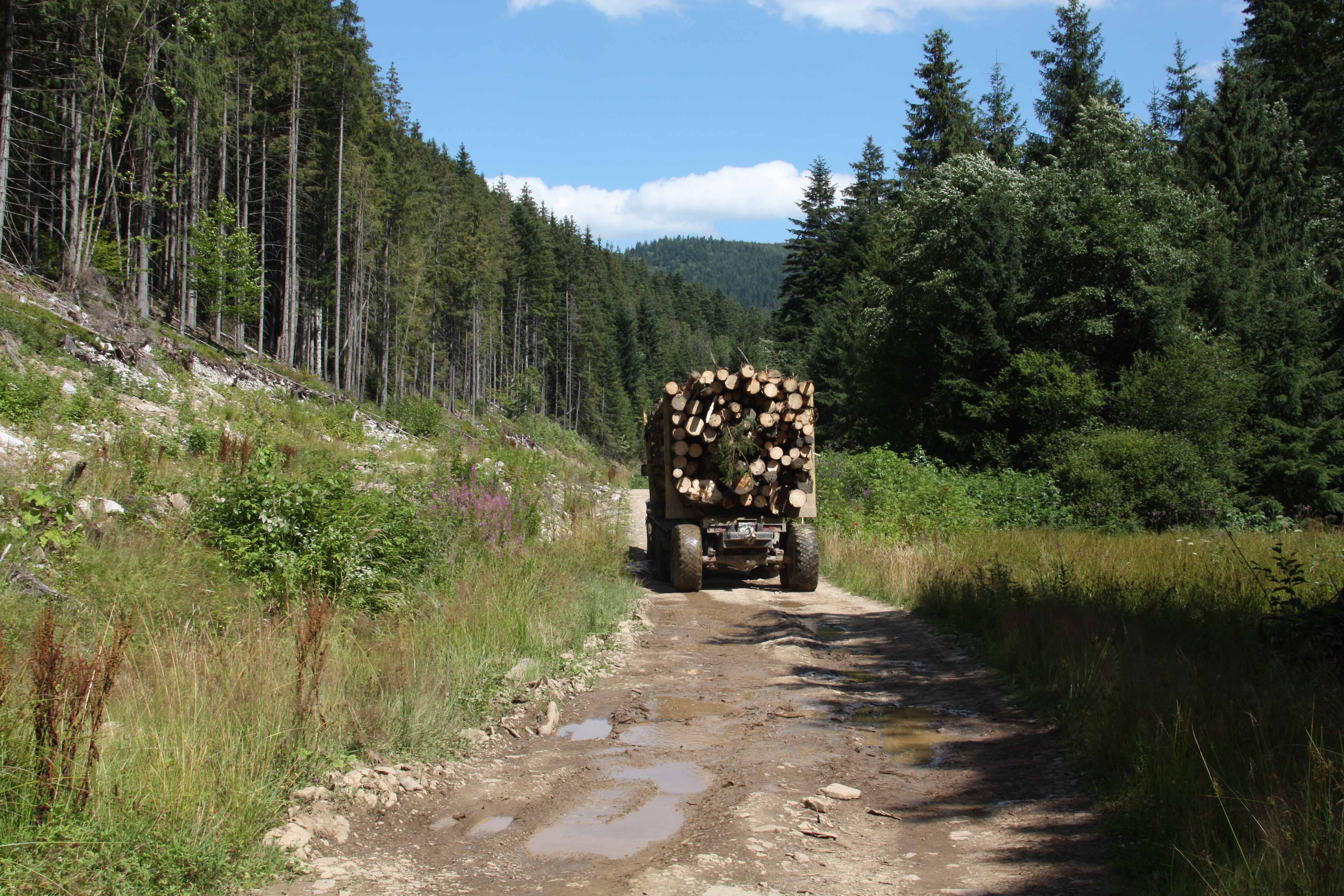
Artificial forest
The first stop at the beginning of the day lies on the road a few kilometres before Vyhoda, once an urban-type settlement, but under the new law, a village in the Kalush district of Ivano-Frankivsk Oblast. An arrow on the green background of the signpost indicates that the Poliuk tract is on the left. Like other forests we'll see today, it belongs to the Vyhoda Forestry branch of the Ukrainian state company Forests of Ukraine.
The dirt road has a lot of mud and puddles, which we have to walk around through the bushes. We walk on a flat path as the real Carpathian Mountains begin further beyond Vyhoda.
There is an artificial forest on both sides of the road. You don't need a degree in botany or forestry to see the "artificiality". Red oaks stand to the right of the road. Their leaves with sharp "rays" really turn red in autumn. However, the tragedy is that they do not decompose on the ground and form a carpet that no other plants can break through.
The tree is originally from North America but has been planted in Ukrainian forests until quite recently. The tree grows well, so it's efficient for growing timber.
However, this oak causes much harm to the forest and its inhabitants. That's why the Ukrainian Ministry for the Environment has recently banned planting this and other alien tree species in forests, sparking a massive outcry from foresters.
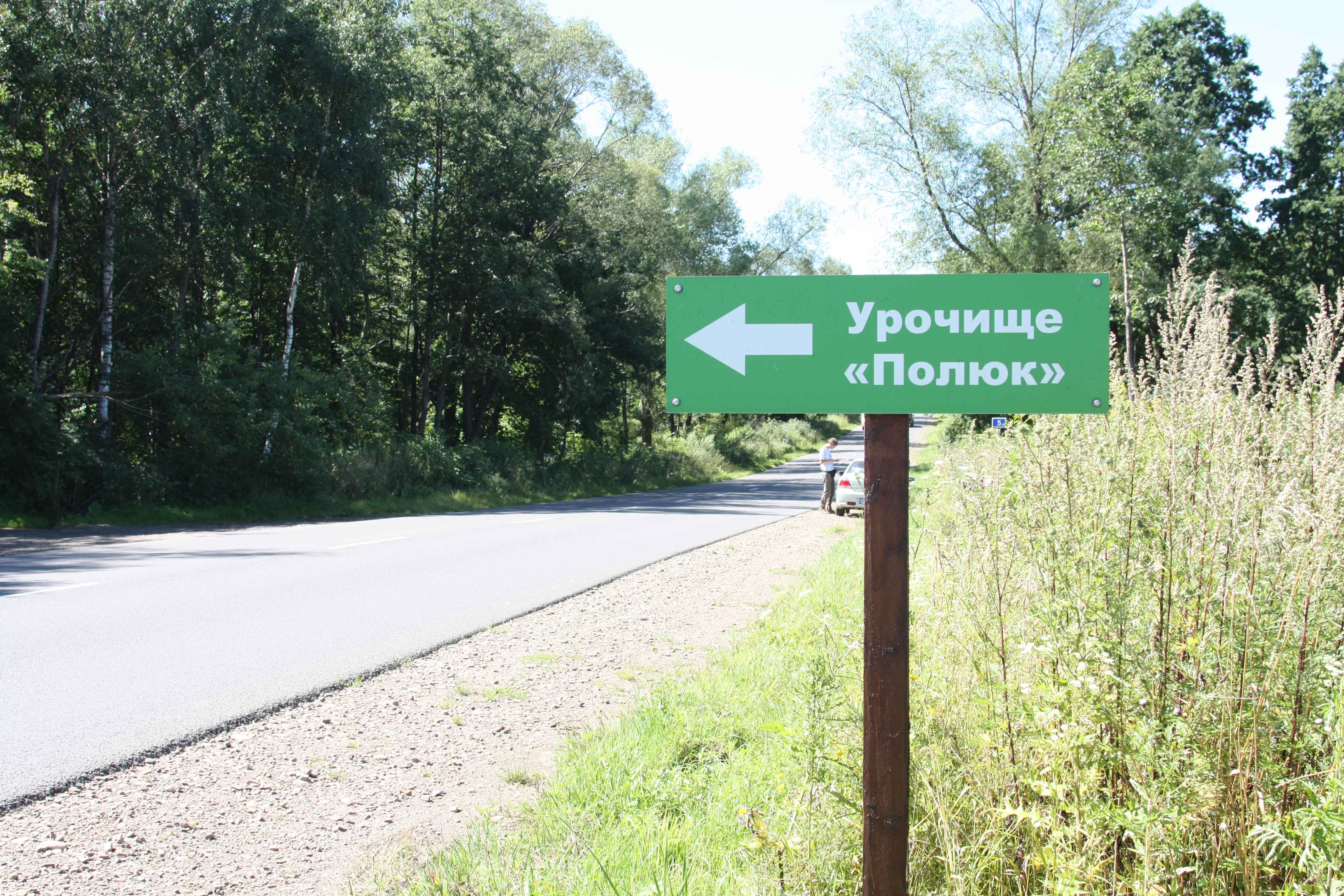
A pure spruce forest grows on the other side of the forest road. The European spruce, or smereka as it's called in the Carpathians, is not just a local species but rather a symbol of these mountains.
The thing is that here, where we are walking, at an altitude of less than 500 metres above sea level, there were no "purely spruce" forests until humans planted them. There were mixed forests, where beech or fir grew alongside spruce.
And it's no accident since a pure spruce forest doesn't do too well in the local climate. It's different in the mountains – an altitude of 1,000 metres or more – where spruce feels fine in a forest with no other trees.
Real forest
At some point, Yehor takes a look at his smartphone, and we dive off the forest road and into the forest without the slightest hint of a path. We follow the slope of a gully along which a forest stream runs until we enter another forest.
The "otherness" is striking. American oaks are not even in the picture here. There are native oaks instead. And besides spruce, you can see beeches.
I ask Tetiana Shamina from the Ukrainian Nature Conservation Group to hug the trunk of one of them with me. We are ten centimetres short of closing the circle. This beech is at least 120 years old.
However, not all the trees here are old. This is a sign of a normal, natural forest as it is of different ages, just like normal human society. Some have recently been born, there are young trees in their prime, and those preparing for their next life.
Life of a dead tree
This next life is definitely possible and essential for trees.
Yehor draws my attention to the dead timber around us. There is plenty of it here: a thick stump that has been rotting for many years, an old tree that has fallen after its roots rotted away, and a "stramp". This is the name given to a long-dead tree that has broken down at a height of several metres but is still standing.
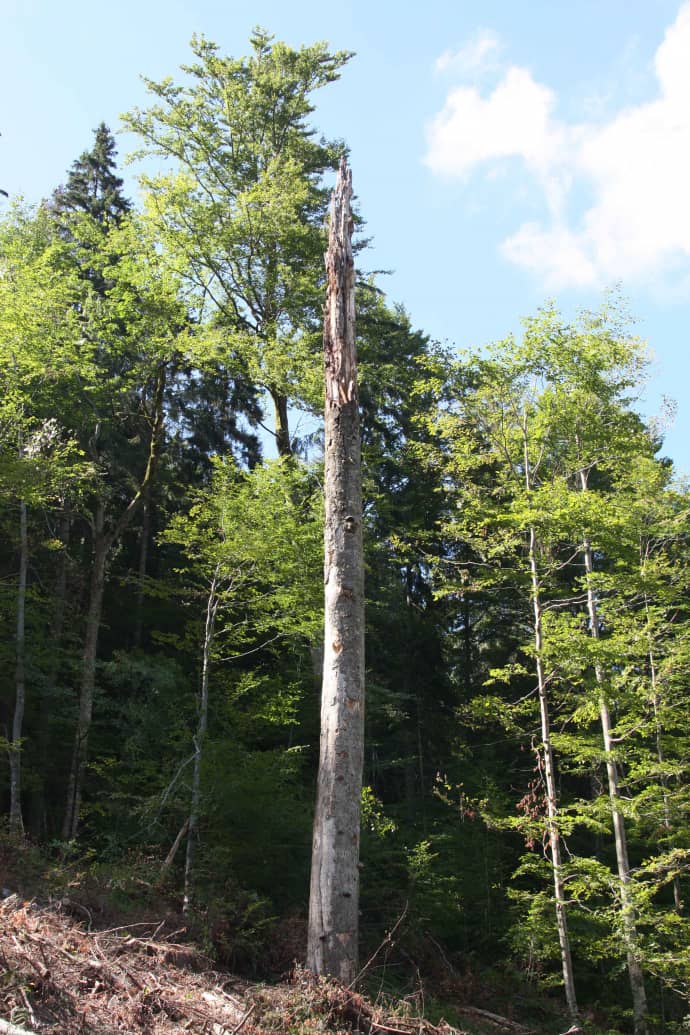
Environmentalists like to say there is more life in dead wood than in living one. And there is no exaggeration in this remark. A dead tree gives life to many species of fungi and small animals, decomposing the wood so that chemical elements can come back into the circle of life.
Larvae of the European stag beetle, for example, feed exclusively on dead wood. And the listing of this species in the Red Data Book is quite thought-provoking. Many less visible but no less critical insects and other invertebrates live next to it.
Everything we see around us suggests that we are in a real natural forest. Even if someone has cut it down, it was long ago and in small volumes. Fortunately, it is not intended to be cut down. After all, timber is not harvested in all forests but only in certain ones designated for this purpose. This one has a recreational function.
Then Yehor points out a post to me. The inscription VRS-23 under the number of the forest plot means that this year the foresters are going to carry out selective sanitary felling (abbreviated as SSF or VRS) here.
Cut down to save
Should an infectious disease spread among people, its pathways must be cut off: cinemas shut down, schools and kindergartens suspended, and perhaps even public transport restricted.
Trees also have their own diseases and pests. For example, the European spruce bark beetle settles in vulnerable trees and kills them. Trees also suffer from a contagious "cancer", although it has nothing in common with the real thing except for its name.
Following human logic, sick trees in the forest should be isolated from the rest. Meaning they should be cut down to prevent others from getting hurt. This is called selective sanitary felling.
Its main task is to "cure the forest". Although, of course, no one will throw the wood obtained this way into the garbage. The law allows for such logging in various forests, not just those managed for timber. This makes sense, as forests need protection.
The problem with sanitary felling is that, from a scientific point of view, its effectiveness is questionable at the very least.
Yes, if a bark beetle-infested tree is discovered promptly, immediately cut down and removed from the forest, it can actually save the rest of the trees. However, this is highly challenging in practice. When it comes to bacterial infections of trees, sanitary felling cannot solve the problem, although foresters disagree.
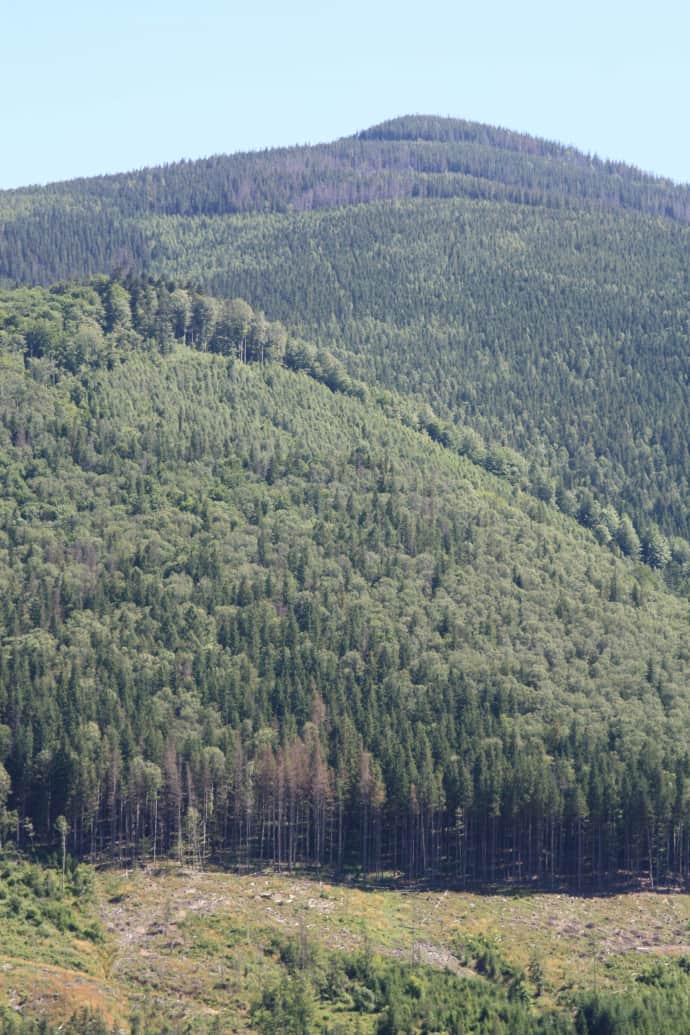
However, the main problem lies elsewhere. On several old beech trees, we can see axe marks on the trunk. The foresters have chosen them for sanitary felling. Yet the trees are healthy, and if they pose a threat to anyone, it is only to birds or bats that can settle in their hollows.
These are the trees that ecologists say are essential for biodiversity.
Nature’s geometry
"Nature is surprisingly well-versed in geometry – it has an affinity for regular shapes," says Petro Tiestov, another member of our group.
He shows me the mountain slopes across from us as we walk up to the next area in the Svicha forest. Here and there you can see patches where forest has been cut down; they have strangely regular contours.
These are the traces of sanitary logging – a measure used when entire patches of forest, and not just several individual trees, fall ill.
The sad irony is that in practice it is rare for the trees to grow sick in regular formations with regular contours, for example in rectangular patches – yet that’s most often the shape that the sanitary logging follows. Healthy trees end up being felled alongside the sick ones (if there were even any sick trees there in the first place).
Petro wears many hats. For the last year and a half he’s been helping the military as a volunteer. He’s also been involved in environment protection for many years. Before that, many years ago, he travelled to several dozen countries and through most of Ukraine – with its mountains, forests, rivers, and spoil heaps.
As the saying goes, however, the less you know, the better you sleep. The more Petro got involved in conservation efforts, the more difficult it became for him to simply enjoy nature’s beauty.
"My tourist adventures often ended up in criminal cases," he says.
"Against whom?"
"Against the foresters."
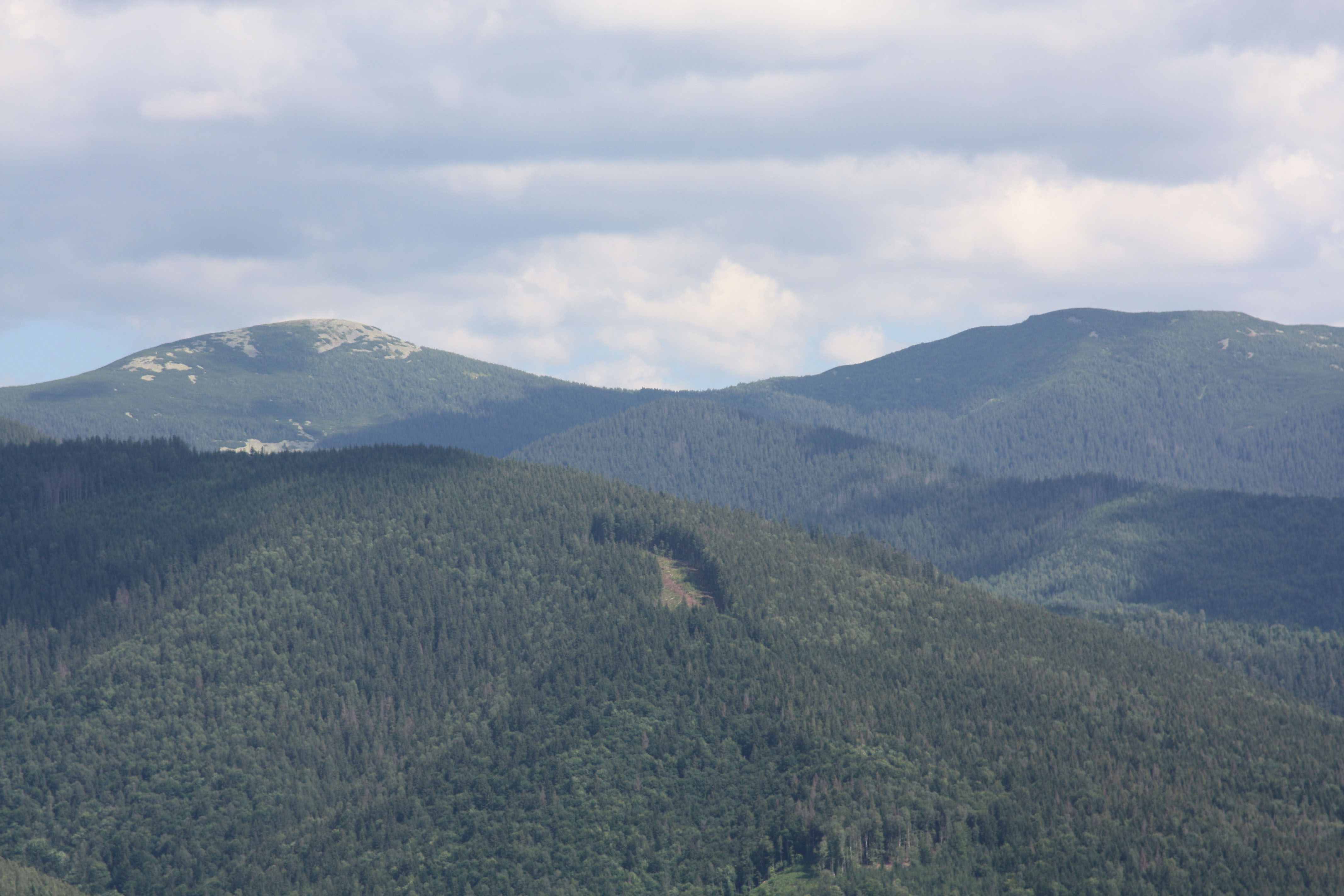
Useful maths
Spruce plantations on both sides of the forest road appear to be drying out. Foresters often point this out when they want to make an argument for logging: they say they have to cut those trees down to preserve the rest of the forest. Often however, it’s the trees around the areas that’d been felled that dry out; it’s not an accident. Felling more trees only leads to more trees drying out – like the proverbial snake that bites its own tail.
We stop by two posts: letters and numbers inscribed on them say that this is an area where foresters are planning to conduct sanitary logging this year. They plan to cut down trees on two sites: one with an area of 0.9 hectares, and the other 0.6 hectares (the maths will come in handy later).
The posts stand no more than an arm’s length apart: those two felling sites are actually one site, artificially split into two. There is an easy explanation for this.
If a forestry authority wants or needs to carry out sanitary logging on an area larger than one hectare, it has to first conduct an environmental impact assessment. This assessment – EIA for short – should generally accompany any project that may affect the environment, such as the construction of a power plant, a new road, and so on.
As part of an EIA, experts assess all of the proposed project’s potential threats to the environment. The public gets involved, too. The Ministry of the Environment then weighs up all the arguments and makes a decision whether to approve the project – and if yes, under what conditions.
An EIA in a forest might show that all trees across a site should not be felled at once, even if the felling is deemed necessary – for example, because the trees protect a stream’s banks, because endangered plant species grow across the site, or because there are healthy trees at the site, the felling of which would be not just pointless but harmful.
Of course foresters are not particularly fond of the EIA process. Fortunately for them, however, an EIA is not compulsory if the area of the intended felling site does not exceed one hectare.
That’s why it’s much easier to cut down trees on two sites – 0.9 hectares and 0.6 hectares – than on one site with a total area of 1.5 hectares. That way, there’s no need to worry about EIAs.
Environmentalists are aware of this trick – as is law enforcement. That’s why foresters decided to amend the law so that clear-cutting could be carried out in the absence of environmental impact assessments. One of the authors of bill No. 9516 is Oleksandr Matusevych, who once headed Vyhoda Forestry.
Murky waters
We take the "road to nowhere" under the scorching sun to our third and final site for the day.
Brooks of crystal-clear water run down the hill here and there. Just like a hundred years ago, you can drink this water without worrying about its effects on your health. You won’t find water that clear anywhere else in Ukraine, except in Crimea. But the bigger stream these brooks flow into and that flows to the River Svicha is totally muddy – there is no trace of those crystal clear waters upstream.
This happens with many Carpathian rivers after a big rain. Water level rises and the turbulent waters can do a lot of damage. Today, however, the weather is different.
"This means that the forest is being felled somewhere upstream," Yehor says. "Here in the Carpathians foresters often drive their tractors and logging trucks right across those brooks. They stir up a ton of silt. On top of that, the soil draining from the logging sites contributes to this mess."
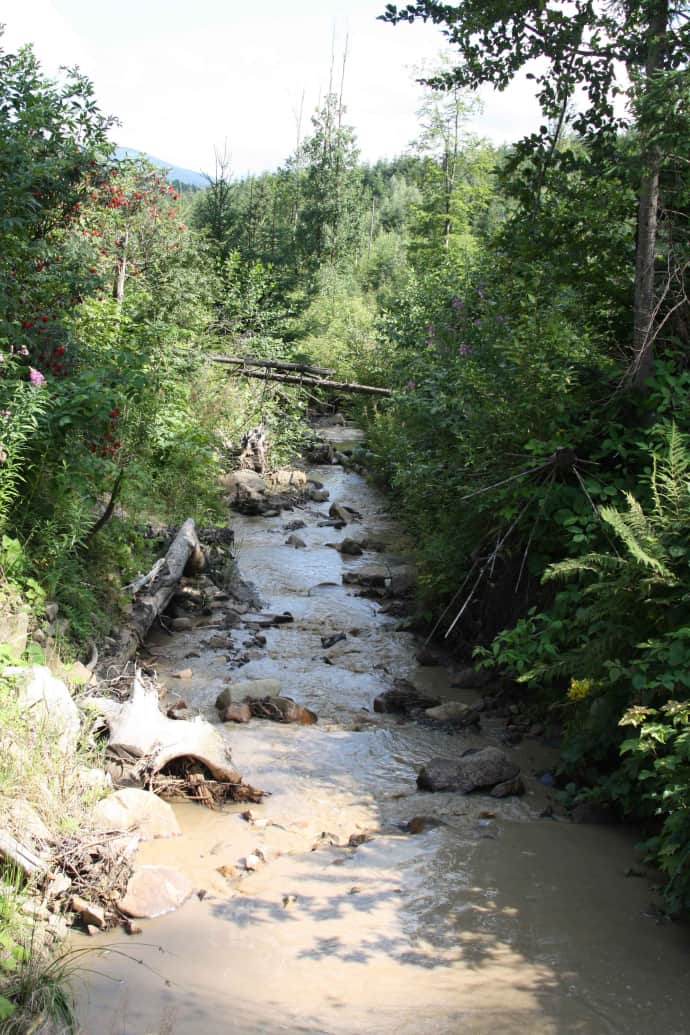
Ukrainian law doesn’t explicitly prohibit vehicles from driving over the brooks and streams. The River Svicha is part of the River Svicha and the Mizunka Tributary nature reserve. Therefore, according to Yehor, this is a violation of the law On Nature Reserves.
There is another argument. Vyhoda State Forestry Enterprise, like many other state forestry enterprises in Ukraine, has an FSC certificate.
International certification
FSC stands for Forest Stewardship Council. These three letters, and an image of a tree, are often printed on food packaging. International auditors issue FSC certification to forestries that go above and beyond the requirements of our national legislation to preserve biodiversity.
Foresters need this certification to be able to sell their goods to Europe. In practice, however, the certificates don’t always guarantee that the forestry enterprises truly care about the environment.
"A huge number of violations unfortunately goes unnoticed by the auditors," Petro Tiestov says. "Some of them are pretty obvious. You don’t have to go far to witness them – just look at stream crossings. Take any area in any forestry site and you’ll see all sorts of violations."
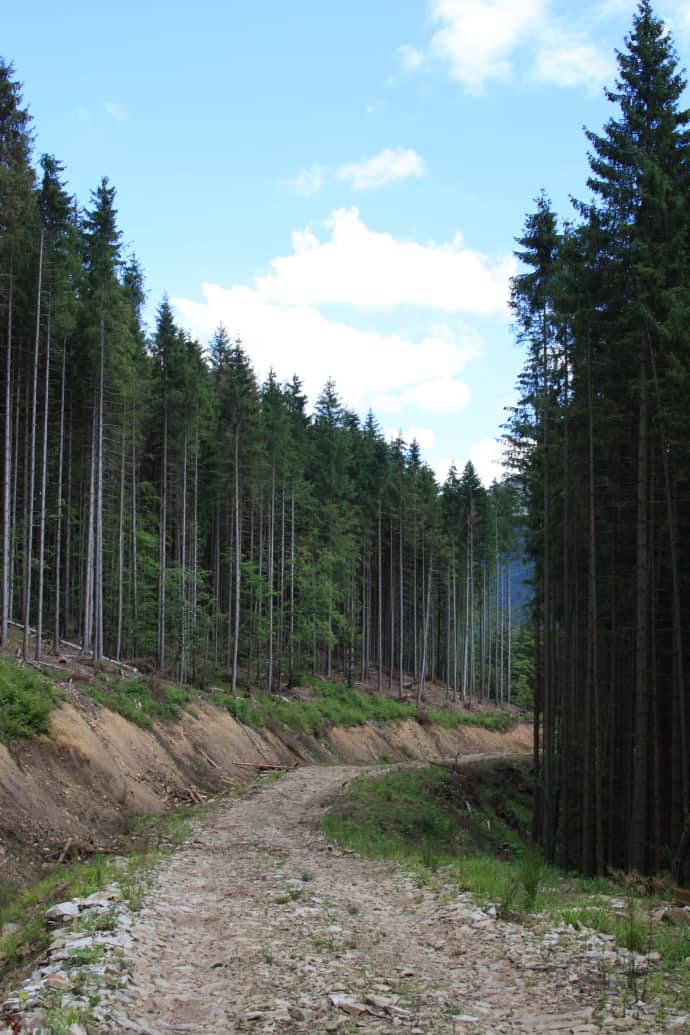
The last stop on the "road to nowhere"
After a steep ascent, we finally reach a plateau – our destination. We can’t see the ground under our feet for the thick layer of tiny needles that were left after the trees were cut down.
Yehor says that according to official documents, there was a 140-year-old forest here until last year. But continuous sanitary felling began to make way for the road that foresters said was necessary to fight fires. It’s as if the forest has been attacked by parasites.
"I think those cases of felling were illegal, because the forest here shows no signs of drying out – it was a good, natural forest," Yehor says. "Foresters cut it down illegally, calling it all ‘sanitary felling’ only because other types of felling are banned here. Even the tree stumps here produce resin, there’s lots of green pines. I was here just last autumn and saw how it looked.
This is illegal from the ecological point of view and from the point of view of protecting biodiversity. We are just stupidly wasting the last remaining old-growth forests.
In Europe people are doing everything they can to preserve these types of forests. In Ukraine we don’t care. So we have what we have."
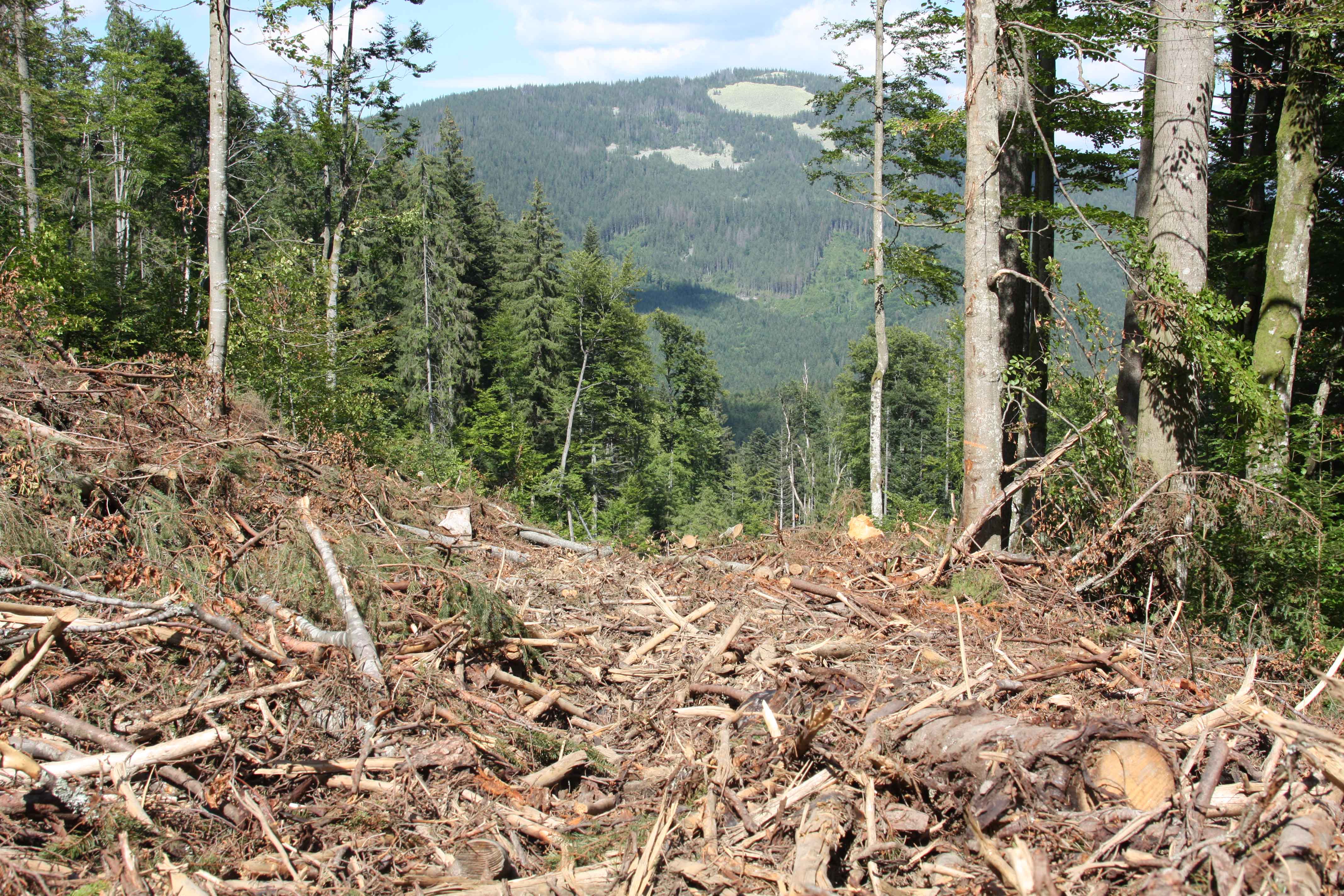
How to protect the forest
The vast majority of illegal or unjustified felling is carried out under the guise of being completely legal and justified. Foresters report this in advance on special information resources.
Any concerned citizen, if they wish, can check these "announcements", which are called felling permits, and go to the Carpathians or elsewhere to see for themselves whether foresters are complying with the law. Let's assume they aren’t. Then there may be several options.
If it turns out that individual trees or a section of the forest have already been cut down, it will be almost impossible to prove the violation, even if circumstantial evidence in the form of freshly cut green branches hints that this is the case.
As was the case in the first site in the Poliuk tract, it is possible to see perfectly healthy trees, which are also important from the point of view of preserving biodiversity, which foresters are going to cut down. In this case, you can, and even should, approach the State Ecological Inspectorate of Ukraine, which deals with similar issues. Petro Tiestov says this is exactly what he and his colleagues have done more than once. But there was so little point to it that in the end, they abandoned the matter.
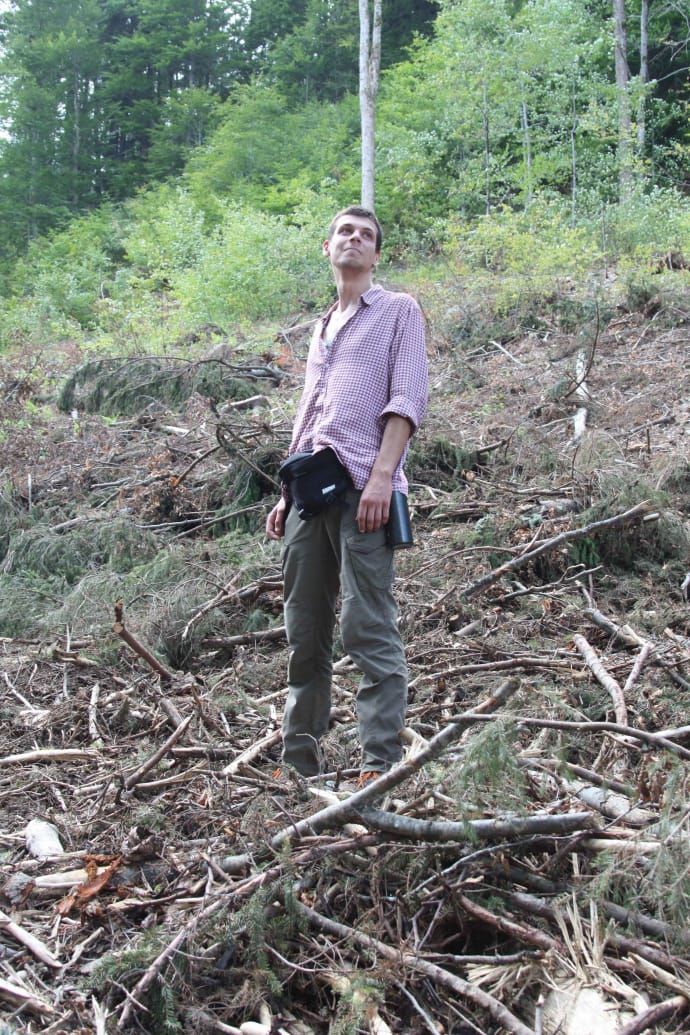
The situation has become even more complicated since the beginning of martial law, environmentalists say.
Now, the State Ecological Inspectorate of Ukraine must receive approval from the Ministry of Ecology and Natural Resources of Ukraine to carry out such an unscheduled inspection of a forestry enterprise. It definitely takes more than one day and even if all the stars aligned and the State Inspectorate does get to the forest, it will definitely not be a surprise for the foresters. And the tree will be just a stump – "no body, no crime".
Petro says that a few years ago, when he worked in the Ministry of Ecology and Natural Resources of Ukraine, in the Brusturianka State Forestry Enterprise in Zakarpattia Oblast, fellow environmentalists discovered instances of planned sanitary felling, which were illegal. The Ministry quickly gave permission, and the State Inspectorate arrived on the spot within three days and actually recorded the violation. But since the felling had not yet occurred, everything ended with an administrative case [offence in violation of the Ukrainian Code on Administrative Offences - ed.] against an ordinary forester who made a mistake.
And even such an outcome is difficult to consider a victory. Foresters can quite legally plan a new felling in the same place quickly and carry it out if nothing gets in the way again.
Nevertheless, Yehor wrote an appeal to the State Inspectorate at my request, asking that an unscheduled inspection of the Vyhoda State Forestry Enterprise be carried out, and he promised to let me know what came of it. Meanwhile, the State Inspectorate replied that it was waiting for the permission of the Ministry of Ecology and Natural Resources of Ukraine to conduct an unscheduled inspection.
Loss of the European market
The Forest Stewardship Council, which certifies our forestry enterprises, has a complaint response system. That is, if any forestry enterprise violates the established requirements, it can be stripped of the certificate and, at the same time, from the European market.
This should be an effective mechanism at first glance. But Petro Tiestov says that no matter how many times he and his colleagues turned to this organisation, there was no point. Except for one case.
"Once we decided to bring the matter to an end. We wrote many complaints to all possible authorities," Petro says. "Foreign auditors came. One of their visits was enough for the Tsuman State Forestry Enterprise [Volyn Oblast –- UP], which had been certified for five years, to instantly lose its certificate. Because almost every requirement that exists was violated."
However, the outcome ate up so much time for ecologists that they do not consider this tool effective. The difficulty lies in the fact that the forestry companies finance the auditors' work. They depend on each other, so they are not inclined to spoil the relationship.
* * *
The problem with forests is that people often measure their value to the country and its society exclusively in terms of cubic metres of wood or its value. It's like judging a book by the number of pages, font, or paper thickness alone. And likewise, the characteristics of food are not limited to calories and even its iron, vitamins and fibre content. Although all these factors are really important.
Wild natural forests are complex systems. Complex not in the sense that "only ecologists can understand how they work." But in the sense that they are inhabited by different types of trees of different ages, including dead ones. And also other plants and many fungi and animals which most of us do not know exist.
All of them are connected by their own "internet", through which they exchange molecules, energy and information. And thanks to this complex web of obvious and not-so-obvious connections, forests have managed for many thousands of years without sanitary felling or any human intervention in general.
Logging not only destroys forests, but also makes them fragile in a predatory world with a changing climate.
The tools available to foresters today should ideally be aimed at making forests truly healthier and more efficient, and not just "timber fields".
However, very specific examples show that these tools are used to legalise felling that has nothing to do with what is called sustainable forestry.
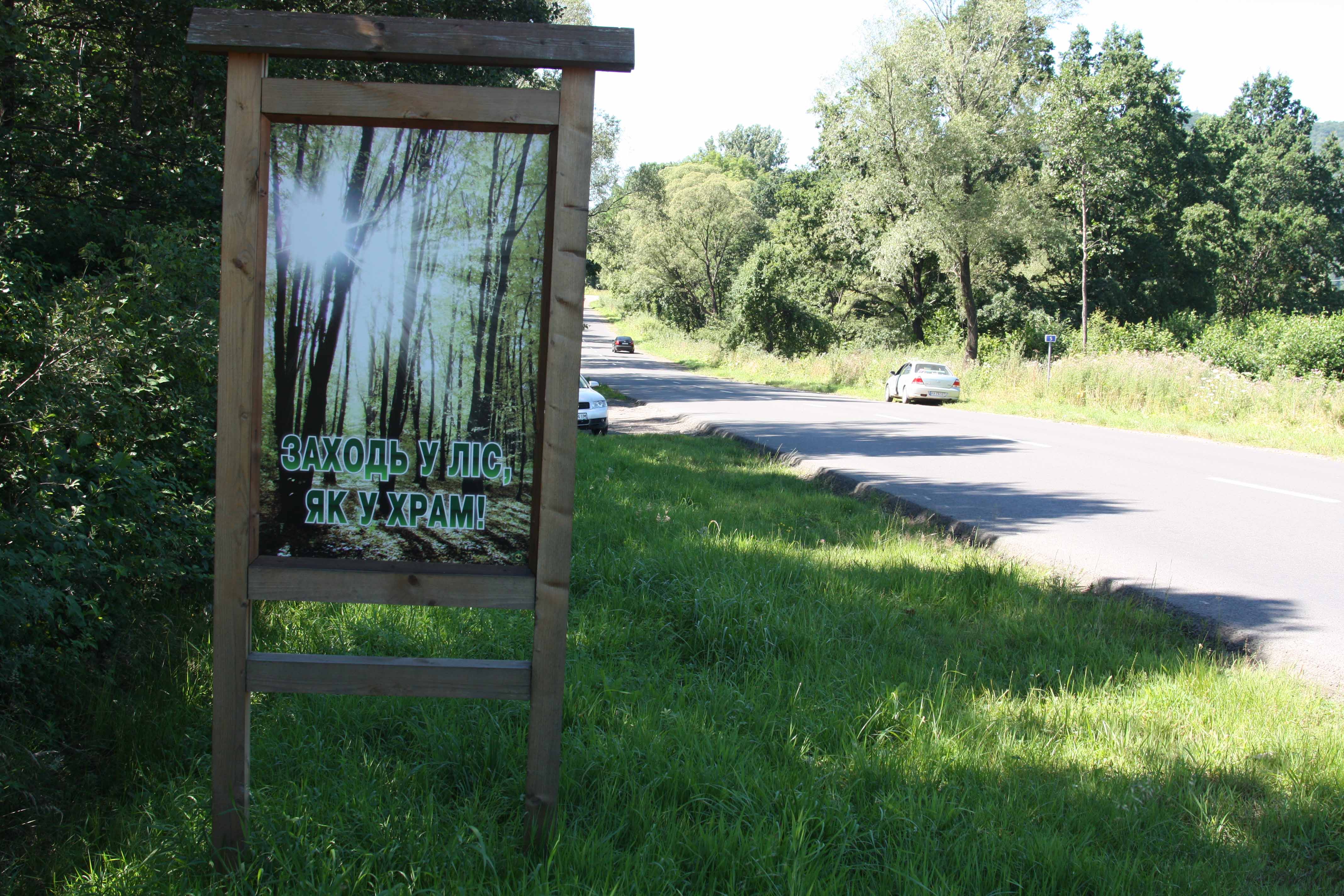
Sanitary felling, both continuous and selective, by the way, is only one of the loopholes in the legislation which allows foresters to cut down the forest where they want. There are others, but this is a topic for another conversation.
Protecting the forest from foresters, even when there are such loopholes in the laws and regulations, is still possible, though very difficult. However, foresters want to remove almost all the last restrictions in their way. This is explained, in particular, by the requirements of wartime, as well as the "European experience".
In addition to the already mentioned draft law No. 9516, which proposes to simplify continuous sanitary felling, this spring the State Forest Resources Agency of Ukraine published a draft Rules for Felling in the Forests of Ukraine.
The Ukrainian Nature Conservation Group says that almost all of their proposals for this document were rejected by the State Forest Resources Agency of Ukraine. If it is adopted as it is, it will mean a disaster for Ukrainian forests.
It proposes to lift restrictions on continuous sanitary felling in high-altitude Carpathian forests. It also allows the felling of trees important for biodiversity and removes a whole series of other safeguards that at least somehow curb the appetites of foresters.
Ukrainska Pravda addressed a request to the Ministry of Environmental Protection and Natural Resources of Ukraine regarding the planned changes in the legislation, but at the time of writing, had not yet received a response.
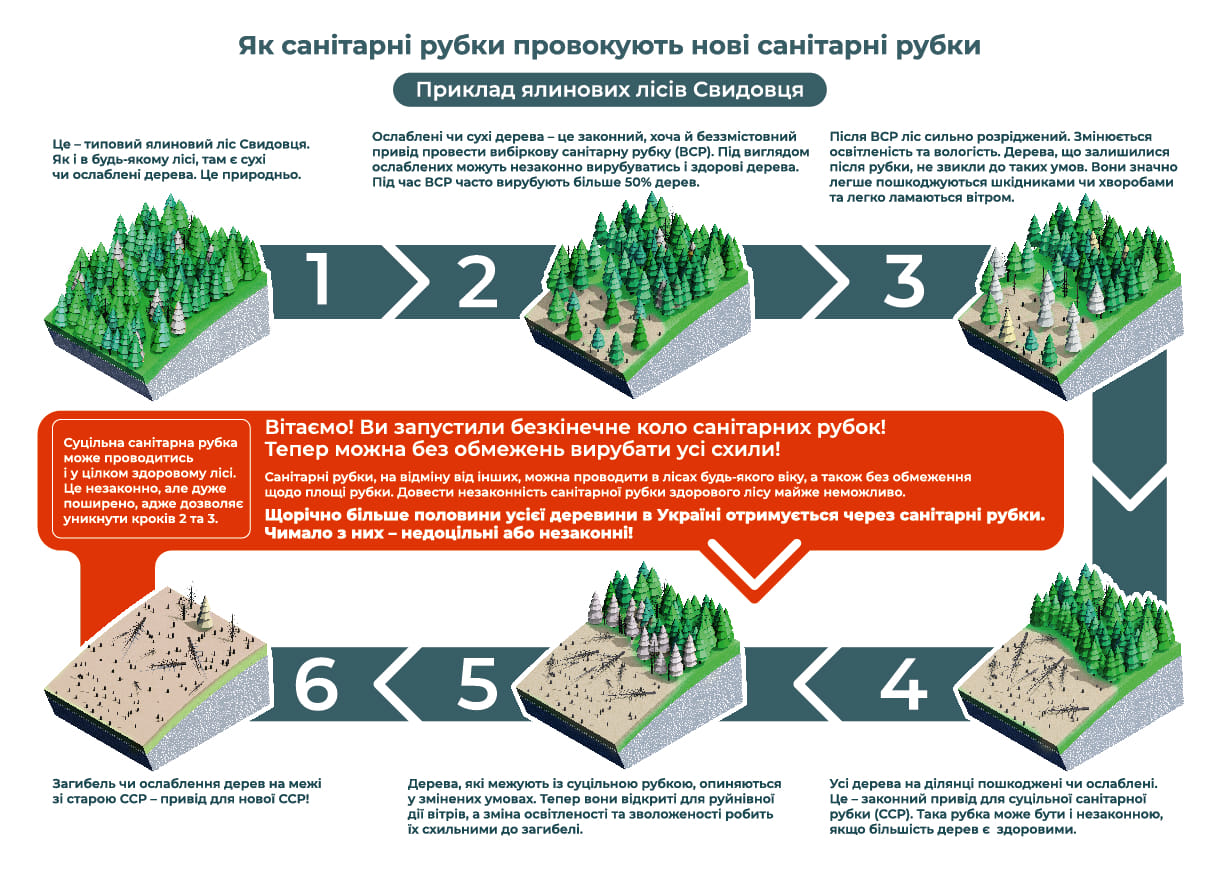
Dmytro Simonov, Ukrainska Pravda
Translation: Artem Yakymyshyn, Olya Loza and Sofiia Kohut
Editing: Susan McDonald